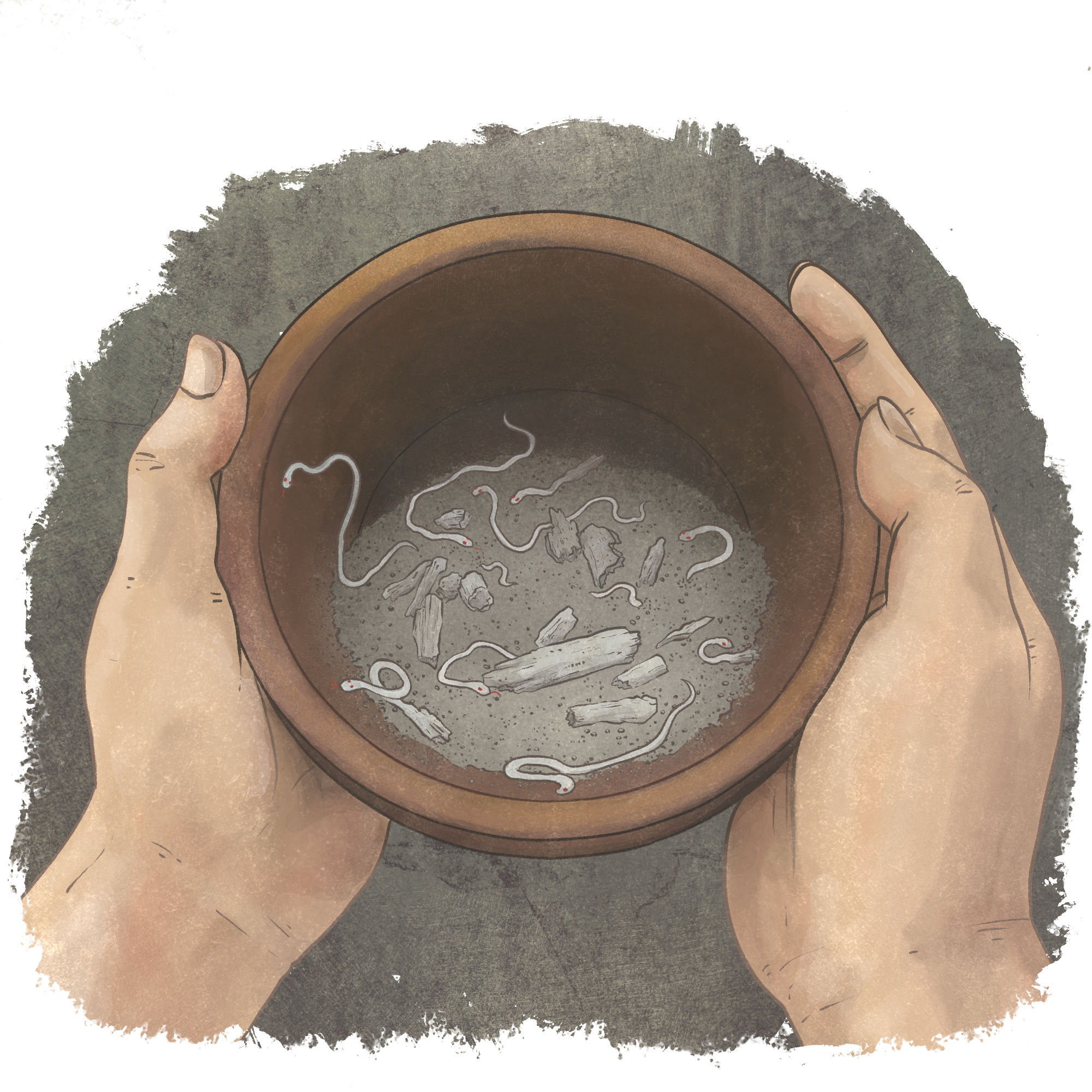Tonight’s story is another one featuring a tanuki, and like the one from last week, it has a bloody ending. This time, though, the yōkai is a lot more dangerous.
The ending of this story matches a pattern that is seen in several yokai stories from all around Japan. Aside from a wild animal disguising itself as an old woman, discovering the pile of bodies underneath the floorboards seems to have been a popular folklore trope. We see it in story patterns like senbiki ōkami, although that is with wolves and not tanuki.
Anyway, this story serves as a reminder that even the furry little critter yōkai are sometimes vicious man-eaters!
The Tanuki Who Transformed into an Old Woman at Nabari, Iga Province
In Iga Province, there is a mountain village to the southeast of a place called Nabari. In this village, every night, one by one people were disappearing. Nobody knew who or what was responsible. One person had their child taken, another person had their parents taken, and the crying and grieving was too painful to watch.
One day, a hunter from that village went into the mountains at dusk. A person came at them from out of the mountains, and when he looked to see who it was, it was a hundred-year-old woman, with disheveled white hair scattered in all directions, and shining eyes. Her appearance was inhuman, so the hunter immediately nocked a crescent-headed arrow and recklessly fired it with a loud twang. It looked like he hit, but the woman got away.
In the morning, the hunter went back to that spot and found a trail of clotted blood that went here and there among the mountains. He followed the trail of blood back to his village, to a small hut behind the village headman’s manor. The hunter was mystified. He asked the village headman, “Who lives in the small hut behind your house?”
“My mother lives there,” he replied. “She is retired. She hasn’t been feeling well since last night, and she won’t eat or let anyone near her.”
The hunter replied, “Well, I have a strange story about that…” And he told the headman everything that had happened.
The headman was also mystified. He went to the small hut, but his mother realized out what was going on, and in an instant she tore through the wall of the hut and ran off. They looked into the bedroom and found a pool of blood the size of a rug. When they looked under the floor, they found countless human bones, including the hands and feet of a child, which had been chewed up and discarded there.
After that they searched the mountains and found the corpse of an old tanuki whose chest had been pierced by an arrow. The headman’s mother had earlier been eaten by this tanuki, which then disguised itself as her and took her place.







